Article from the section “Calendar of work for gardeners, market gardeners, flower growers.”
What work do gardeners need to do in September?
Your garden: work of the month.
There is still a lot of work to do in the garden: we are harvesting the harvest, planting berry bushes and strawberries, and putting the garden plantings in order.
We collect and store apples
When picking apples, do not shake or knock them off the branches. If they are damaged they will not last long. You need to carefully, without pressing, take the apple in your hand and simply turn it clockwise or counterclockwise, and it will come off.
Fruits affected by fruit rot or bitter pitting (even spot lesions) should not be stored.
Fruits affected by scab at the beginning of summer can be stored well. But if the damage is caused by late scab, for example in August, the fruits in storage will rot. Fruits damaged by leaf rollers or second-generation codling moths also rot.
Planting strawberries and berry bushes
If you didn’t have time to plant strawberries in August, try to do it before mid-September so that they have time to take root properly before the cold weather begins.
The main care for strawberries in September is watering, covering exposed roots, freeing strawberry hearts, and loosening the rows.
At the beginning of September, prepare pits for planting fruit trees to plant seedlings in early October.
For berry bush seedlings, cut off broken branches after leaf fall. Cut off and burn the ends of shoots affected by powdery mildew. It is better to plant them from September 20 to October 10. When planting berries in the fall, do not prune them, except for raspberries, for which pruning increases winter hardiness.
Can be sprinkled with soil horizontal layering of currants, gooseberries, honeysuckle, chokeberry for propagation.
If you made cuttings of shrubs in the spring, at the end of September you can dig them up and plant strong seedlings with roots no shorter than 20 cm in a permanent place. Weak ones - for growing.
Shoots of non-frost-resistant varieties At the end of September, carefully bend the raspberries to the ground along the row and tie them to a neighboring bush.
To prevent diseases, you can spray the bushes with 1% Bordeaux mixture.
To protect trees from the winter moth, the females of which climb up the trunk in late autumn to lay eggs on the leaves, apply glue rings or cardboard funnels greased with non-drying glue from the inside, directed with the bell down.
We process tree trunks and shrubs
An important autumn event is digging up the soil in the trunk circles of fruit trees and berry bushes. This is necessary to loosen the soil and allow air and moisture to penetrate into it.
In addition, digging up the soil in the garden disrupts the overwintering conditions of pests - sawflies, caterpillars and pupae of harmful butterflies. Some of them fall into the depths during digging and will not be able to get out in the spring; some turn out to the surface of the soil and die from frost.
You should not dig the soil under the trees deeply to avoid damaging the fibrous roots. Light loosening of the top layer is sufficient.
If you don’t dig up the soil in the fall, you’ll have to do it in the spring, when there will be a lot of work to do in the garden. But the main thing is that you will promptly provide useful activity to microorganisms that create fertile soil.
In the spring, it is enough to harrow the soil cultivated in the fall with a rake lengthwise and crosswise.
When digging in the fall, it is necessary to add rotted manure or compost to the clay soil. They can be replaced with blackened sawdust or chopped straw.
Fresh sawdust must first be enriched with one of the nitrogen-containing fertilizers:
- urea
- ammonium nitrate.
Fill three buckets of sawdust with a solution (3 tablespoons per bucket of water).
After this, put the enriched sawdust in a pile and cover with film for a month. They bring them in 2 buckets per square meter. m of clay soil or 10 sq. m of loamy soil.
If you couldn't add manure or compost and you don’t have sawdust, dig fresh stems and leaves of perennial lupine, beans, beans, beet tops and carrots onto the bayonet of a shovel - this is a good organic fertilizer.
Crushed stems of marigolds and marigolds embedded in the soil cleanse it of pests and fungal diseases.
Together with organic fertilizer coarse river sand is added. Some gardeners replace it with construction sand, which helps compact the soil.
In autumn they grow intensively apple and pear roots. They need to be fed: per 1 sq. m 3-5 kg of organic matter, 10-12 g of potash fertilizers, 30-40 g of superphosphate. Fertilizers are applied when digging tree trunk circles. The land must be pre-watered.
Don't forget to mow your lawn before winter. If this is not done, in the spring it will be difficult for the grass to grow through the sod and it will emerge unevenly.
Last weeding Spend under trees and berry bushes at the end of the month and leave the weeds right there.
You can read more about processing tree trunk circles Here
To water or not to water garden trees in September
You cannot water trees in September: this can cause secondary growth of shoots and possible freezing in winter. In prolonged dry weather, you can water young trees that do not bear fruit.
In young apple and pear trees, pinch out strongly growing shoots so that the wood ripens before the onset of severe frosts. Trim the vines in October to avoid weeding.
Carry out sanitary pruning of trees.Cut into a ring (until the ring is formed at the base of the branch) all dried and diseased branches. Cover all cuts with garden varnish. Remove or loosen the film on budding and grafted cuttings.
What work can gardeners expect in September?
Your garden: work of the month.
September, although an autumn month, is full of summer worries: you need to water and feed the vegetable beds; it’s not too late to sow some crops:
- radish
- salad
- dill
- rukulu
- Japanese cabbage
- spinach
In a word, if we are going to extend the vegetable season until late autumn, we won’t have to sit idly by; there is still a lot to do. So what kind of work needs to be done in the garden in September?
We are beginning to prepare the ground for next year's harvest.
Summer is over... True, there are still many warm days ahead. Precisely warm ones, not sultry ones, when you don’t want to go out into the sun.
In September, spring performance will return to us. And the time required for watering and loosening is much less than in summer. And that's by the way. After all, there is so much to be done: to find a use for the grown crop, and to restore the tired land for the next season.
The latter is perhaps no less important than the former. Therefore, if the cucumbers in the garden no longer please you (the leaves have turned yellow, there is no growth, and therefore no harvest), do not wait until the vines are completely dry. Empty the bed, add half a bucket of compost or humus, a tablespoon of complex fertilizer per square meter, dig up and sow with green manure.
If you plan to sow early-ripening vegetables or plant potatoes in this area next season, the following will be suitable as green fertilizer:
- mustard
- phacelia
- oats
- peas
Before the onset of stable cold weather, you will embed these green manures shallowly into the soil and in the spring you will have a bed with rested, fertilized soil.
If you are going to occupy a cucumber bed in May with nightshade crops and plant tomatoes, peppers, and eggplants here, then you can sow the area with winter rye in order to incorporate it into the soil in the spring.
Cucumbers are considered good predecessors of garlic. Therefore, you can prepare the vacant bed for this crop. This must be done in advance so that the soil in the garden bed has time to settle and the cloves can be
the cages were not drawn to excessive depth.
Add up to a bucket of humus or compost, a tablespoon of superphosphate and potassium sulfate (or a spoonful of nitrophoska) and dig it onto the bayonet of a shovel. The bed is leveled, and if the soil is dry, then it is watered to provoke the germination of weeds and destroy them before planting the garlic.
Do you want to get on the vacant bed autumn harvest of radishes, lettuce, dill? This is also an option: changing crops gives the soil rest. Just when harvesting the radishes, leave the tops in the garden: let them at least partially repay the “debts” to the soil.
Don’t try to keep it in the beds Tomato bushes of early varieties gave up their main harvest before frost. A few unripe fruits can be put to use (preserved, put for ripening), and plants crushed with a shovel can be placed in compost or as the bottom layer in a garden bed.
But only healthy plants can be chopped and composted. Sick plants will have to be burned.
We clean, take care, hurry...
If you don't have a refrigerator for winter supplies, do not rush to harvest root crops intended for storage.It will be warm in the basements for a long time and there is no point in putting vegetables down there - they will begin to wither.
And even more so, do not rush to dig up the parsnips: the later you remove them, the more significant the root crops will be. You can dig them even after frost, and some can be left in the garden bed in the winter - for the spring table or for obtaining seeds.
Let's pester you again petiole celery. To make the petioles juicier and more tender, we feed the celery with mullein infusion, adding a tablespoon of complex fertilizers (per 10 liters).
We continue to loosen leek. If we see that after all our thinning it is still growing thickly, we pull out the weaker plants and use them for culinary purposes. Hill up the plants again to get larger bleached stems.
We continue to court for summer-sown cucumbers, seedless and indeterminate tomatoes, peppers, eggplants: they still have at least another month to harvest.
If there are a lot of ugly fruits on the cucumbers, feed them with organic infusion or mineral fertilizers: a teaspoon of urea and potassium sulfate per square meter. m. You can carry out foliar fertilizing with urea (1 g of fertilizer per liter of water).
In September they take shape favorable conditions for the development of powdery mildew on cucumbers, zucchini, and late blight on tomatoes.
We will not use chemical fungicides, since they have a long waiting period, but biological preparations (phytosporin-M. alirin-B) can be treated to help the plants last until the end of the season.
Cucumbers sown in August can be covered with non-woven material so that they do not suffer from temperature changes and do not get sick.
Cut off completely sorrel leaves if they are affected by powdery mildew. They still have time to grow.
Feeding perennial vegetables
It won't be superfluous fertilizing (a tablespoon of autumn complex mineral fertilizer per sq. m) and for perennial vegetables: onions, mucus, chives, sorrel, rhubarb, asparagus.
An adult rhubarb bush can be planted at the end of the month. The dug up rhizome is cut with a knife so that each section has a good bud and 1-2 large roots. We keep the roots in the sun for several hours to dry the wounds.
Meanwhile We prepare planting holes: we dig them 80-100 cm apart from each other, fill them with compost or humus (3-5 kg), complex mineral fertilizer (up to two tablespoons per hole) and spill them well with water. We mulch the planted cuttings with compost or humus.
Paying attention to cabbage
Considering the weather, Due to shortened daylight hours and cool nights, we reduce watering for mid-season and late-season cabbage, otherwise cracking of the heads of cabbage is inevitable. We immediately cut off the heads of cabbage that begin to crack, without waiting for them to burst completely, and use them for business. You can also ferment it.
Do not break off the lower leaves of cabbage. Some summer residents are convinced that such an operation helps the heads of cabbage to ripen better. This is a misconception.
But we continue to loosen the cabbage rows after each watering and rain. This stimulates the work of the roots and, therefore, makes the cabbage more nutritious, tasty and juicy.
Cabbage in September can be damaged by slugs: they really like the early autumn weather. To reduce the number of these slippery pests, you will have to collect them manually (preferably with tweezers) early in the morning or evening from the plants, sprinkle the moist soil around the cabbage with mustard powder and wood ash.
And, of course, lay out There are boards and rags next to the beds in order to destroy the slugs hiding under them in the morning.
At the end of the month, we trim the tops of Brussels sprouts so that the plants direct all the nutrients to the heads that have already formed on the stem.
On the pumpkin vines We pinch the growing points so that at least 5-7 leaves remain before the fruit. We reduce watering, giving the grown pumpkins the opportunity to ripen. We also pinch the growing points of the melons.
You need to remove the onions before the rains
While it's dry and warm, we remove late varieties of onions grown from seeds. The warm weather of September will allow it to dry well and protect it from neck rot.
The sun is no longer so merciless, so the dug up bulbs, laid in one layer, can be dried directly in the garden bed. We stir the bulbs from time to time. From well-dried onions, the loosely fitting upper scales easily fall off, and the onion becomes clean and beautiful.
Don't forget about potatoes
Without waiting for the rains, it is advisable to dig up potatoes planted in May. And yet, first make sure that the tubers are ripe, because these potatoes will have to be stored. The skin on the tubers should be dense and non-sucking.
When digging up potatoes, we do not throw them into a bucket, but carefully place them. Injured tubers easily become sick.
After digging, dry the potatoes immediately, spreading them in a thin layer, and then transfer them indoors for 2-3 weeks. During this time, wounds caused during harvesting become scarred on the tubers, and diseases appear.
Lower the potatoes We’re not in a hurry to go to the basement: it’s humid and warm there. And the storage needs to be prepared to receive the new harvest.
Feeding plants planted in July
In September we continue to care for vegetables planted in the second half of summer.We feed the bloomed potatoes with wood ash, scattering it between the rows. Immediately loosen and water.
Instead of ash, you can use complex potato fertilizer or simply one with a reduced nitrogen content (a tablespoon per sq. m). In autumn, excess nitrogen is especially dangerous for potatoes: they increase the likelihood of plants being damaged by late blight.
We feed cauliflower and broccoli planted in July with a mixture of organic infusion (0.5 l) and complex mineral fertilizer (a tablespoon per 10 l of water).
Sprinkle the beds of daikon and radish with wood ash. This is both feeding and protection against cruciferous pests.
It is advisable to cover cucumbers sown in August with lutrasil to reduce the negative impact of changes in night and day temperatures.
Collecting a “herbarium” for the kitchen
Many herbs are very sensitive to low temperatures. Parsley, dill, and celery still have the whole of October ahead of them, but basil, marjoram, lemon balm and other herbs are a must, without putting them off until later.
Once dried, they can be ground in a coffee grinder and scattered into different jars. In winter, herbs can be mixed and used to season meat, fish, salads, soups, make tea from them, add to cookie dough, etc.
Such homemade “spices” are undoubtedly better than store-bought ones, because we know for sure that nothing was added to them for taste and aroma.
A trimmed basil bush can be dug up and transplanted into a small pot filled with fertile soil mixture. If you cut off the flower panicles in time, the plant will delight you with its fragrant leaves on the kitchen window for a long time.
Just don’t put off transplanting until October: basil dies even when the temperature drops briefly to zero.
What to do in the flower garden
At the beginning of autumn, flower growers also have a lot of work. Read about it on the next page
Other articles in this series:
- Seasonal work in the garden and vegetable garden in October.
- Seasonal work in the garden and vegetable garden in November.
- Seasonal work for gardeners and gardeners in December.
- Seasonal work for gardeners and gardeners in January.
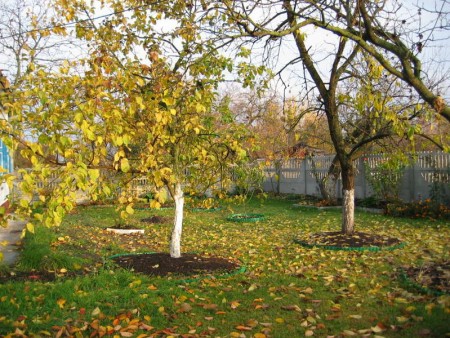
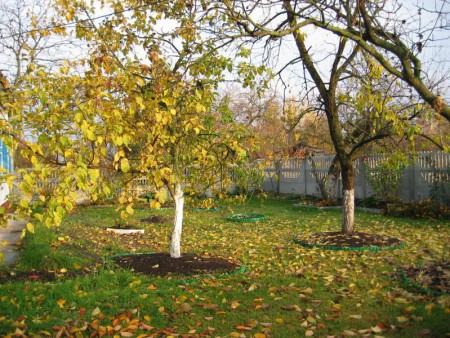
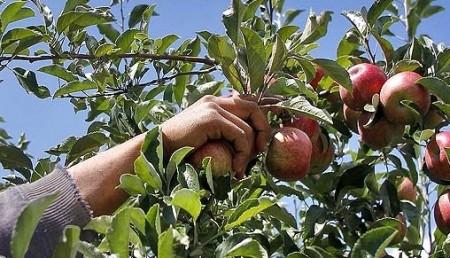
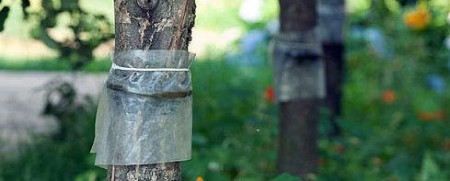
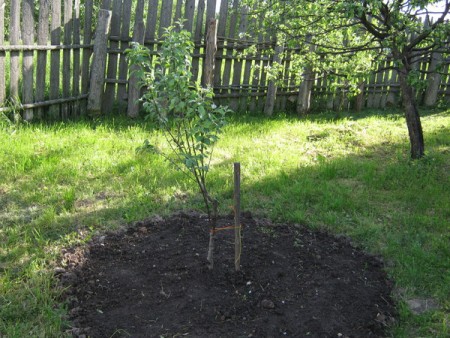
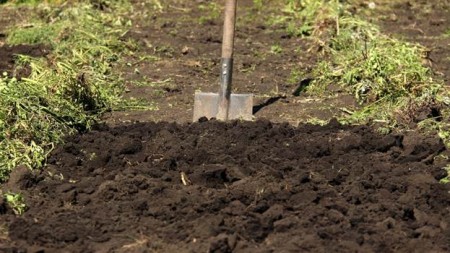
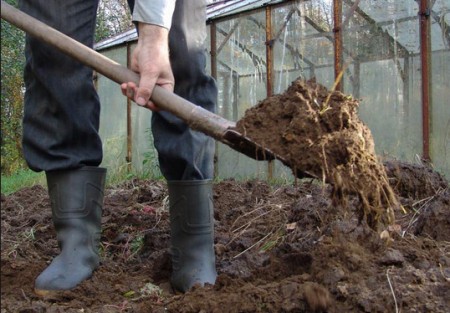
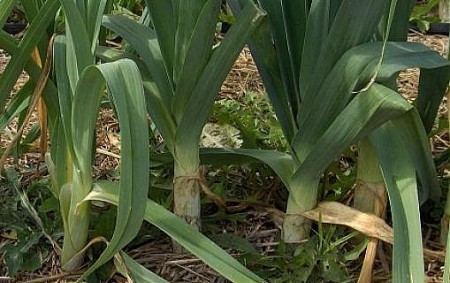
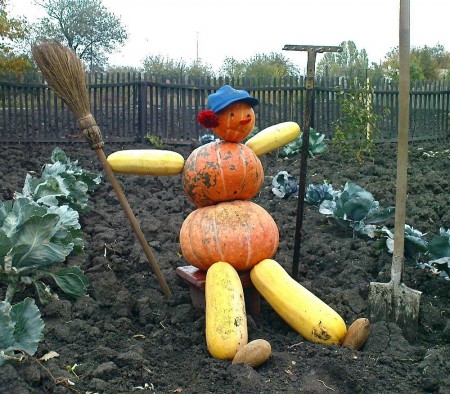
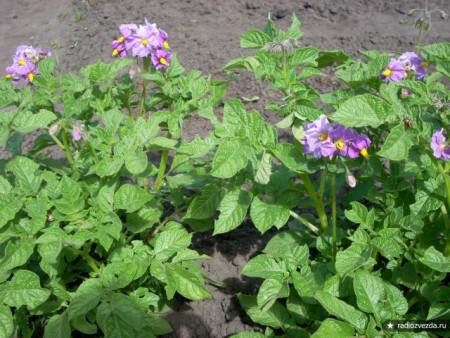

 (8 ratings, average: 4,63 out of 5)
(8 ratings, average: 4,63 out of 5) CUCUMBERS NEVER GET SICK, I'VE BEEN USING ONLY THIS FOR 40 YEARS! I SHARE A SECRET WITH YOU, CUCUMBERS ARE LIKE THE PICTURE!
CUCUMBERS NEVER GET SICK, I'VE BEEN USING ONLY THIS FOR 40 YEARS! I SHARE A SECRET WITH YOU, CUCUMBERS ARE LIKE THE PICTURE! You can dig a bucket of potatoes from each bush. Do you think these are fairy tales? Watch the video
You can dig a bucket of potatoes from each bush. Do you think these are fairy tales? Watch the video
 How our fellow gardeners work in Korea. There is a lot to learn and just fun to watch.
How our fellow gardeners work in Korea. There is a lot to learn and just fun to watch. Eye trainer. The author claims that with daily viewing, vision is restored. They don't charge money for views.
Eye trainer. The author claims that with daily viewing, vision is restored. They don't charge money for views. A 3-ingredient cake recipe in 30 minutes is better than Napoleon. Simple and very tasty.
A 3-ingredient cake recipe in 30 minutes is better than Napoleon. Simple and very tasty. Therapeutic exercises for cervical osteochondrosis. A complete set of exercises.
Therapeutic exercises for cervical osteochondrosis. A complete set of exercises. Which indoor plants match your zodiac sign?
Which indoor plants match your zodiac sign? What about them? Excursion to German dachas.
What about them? Excursion to German dachas.